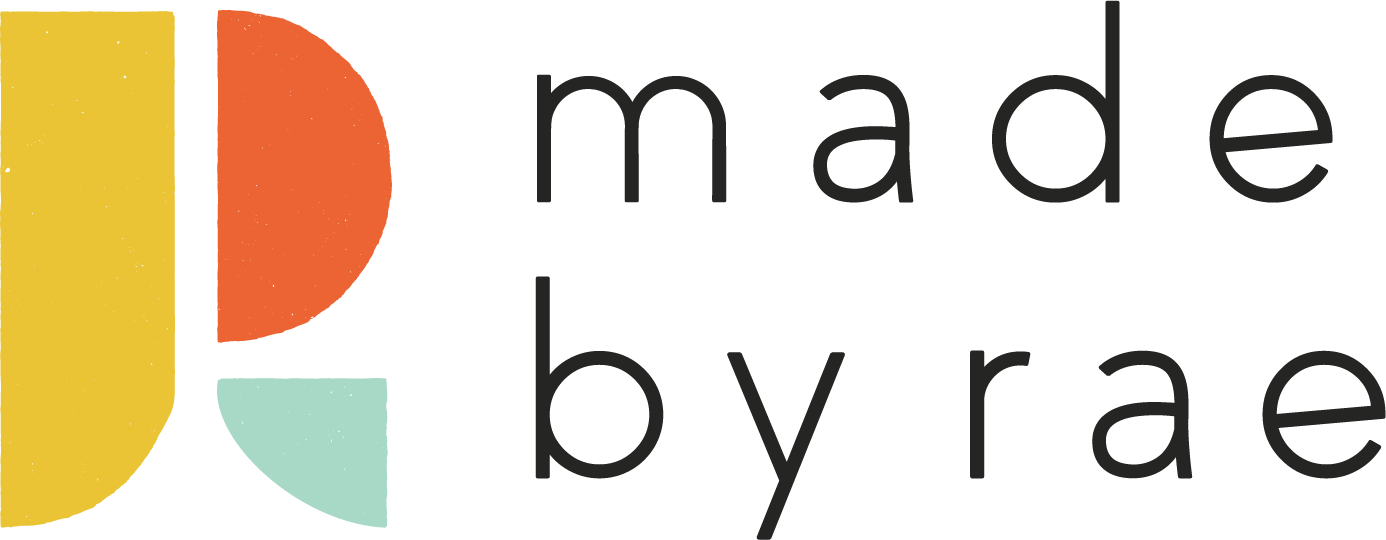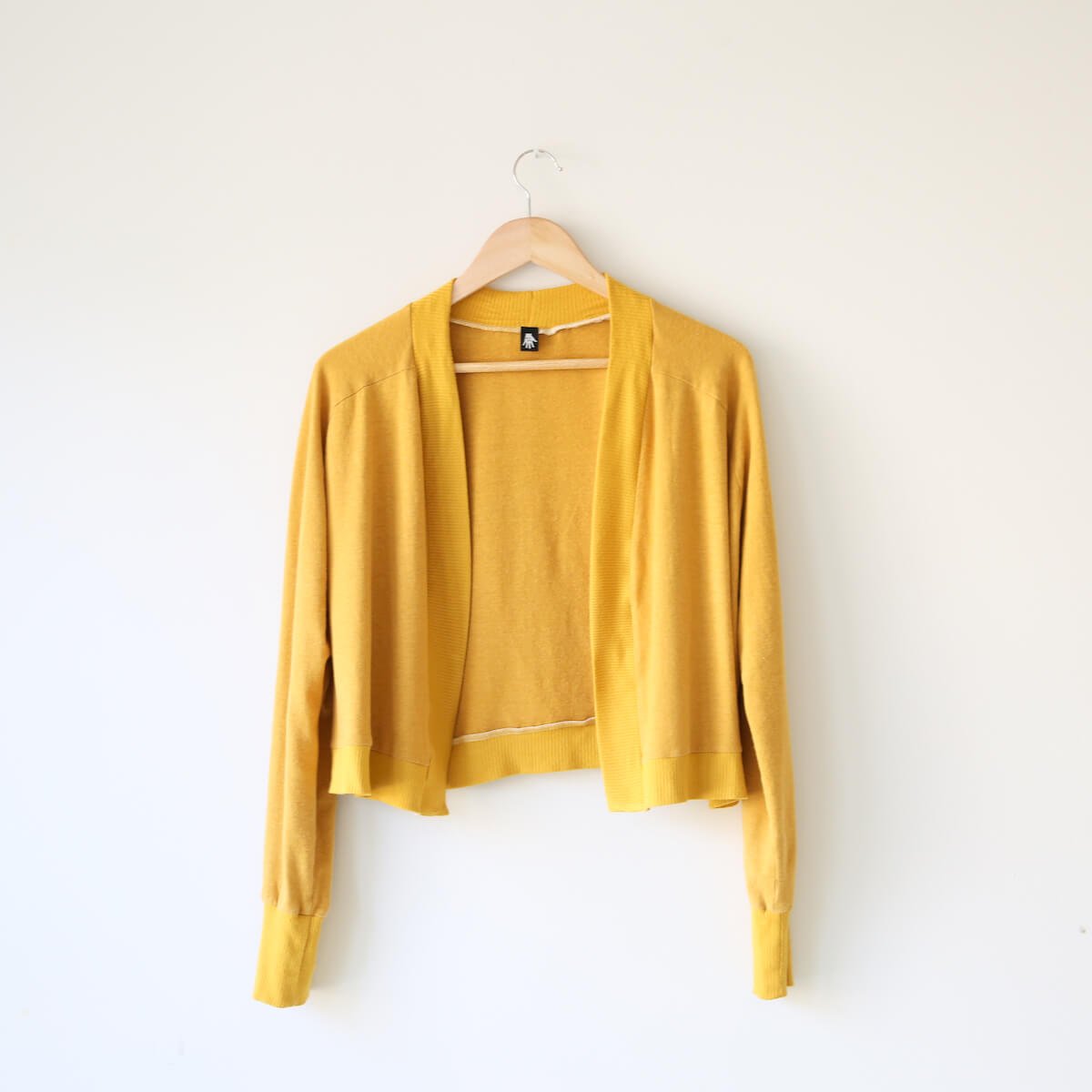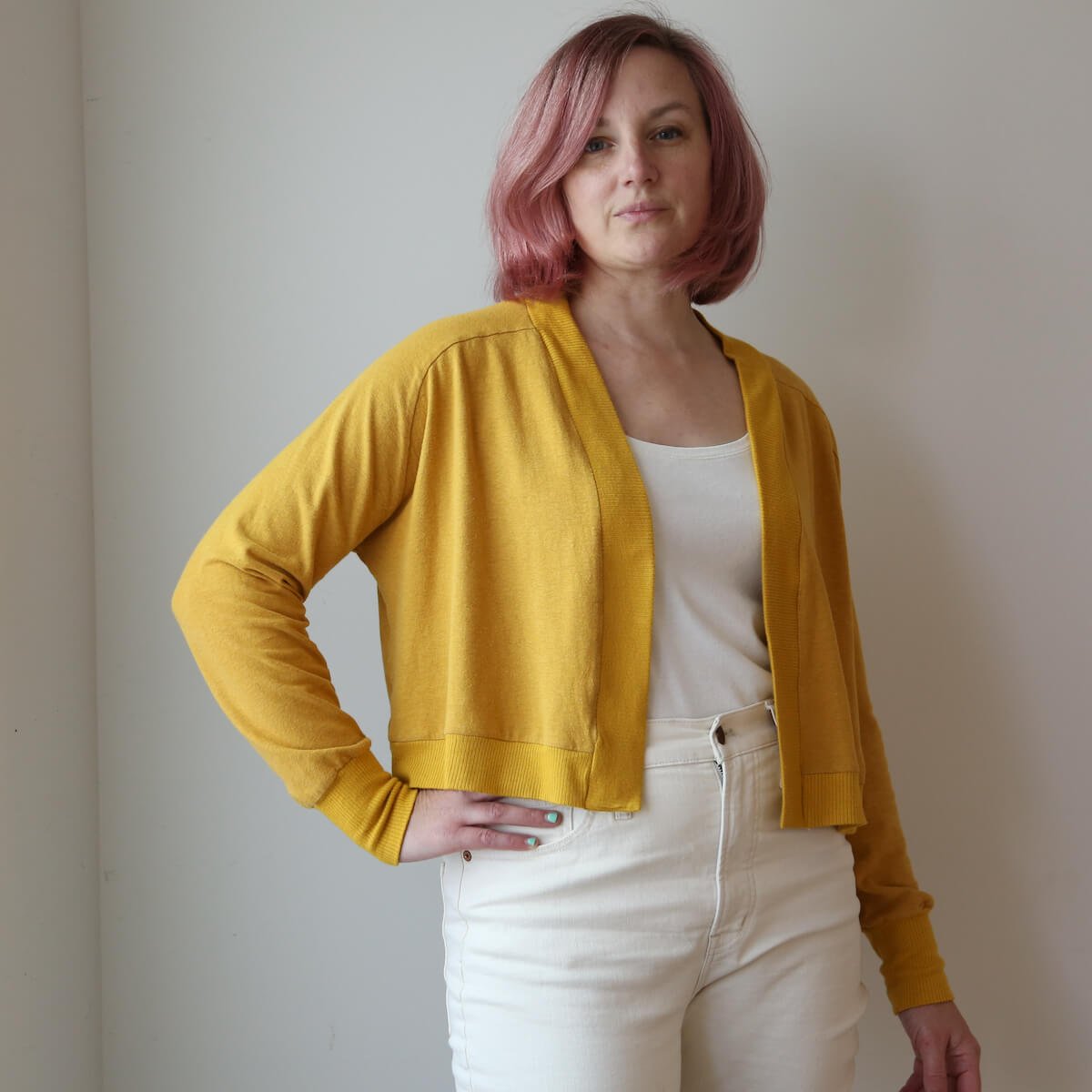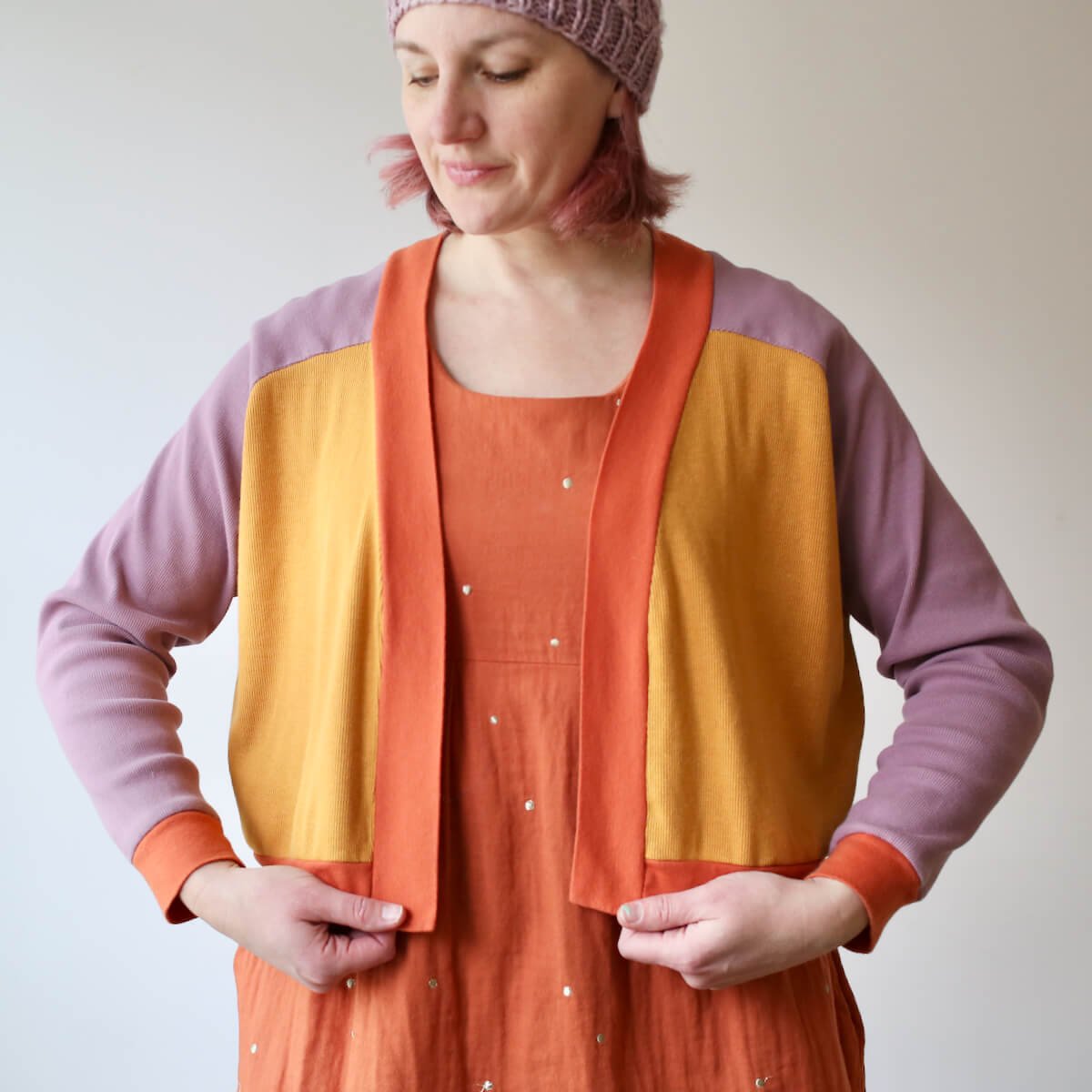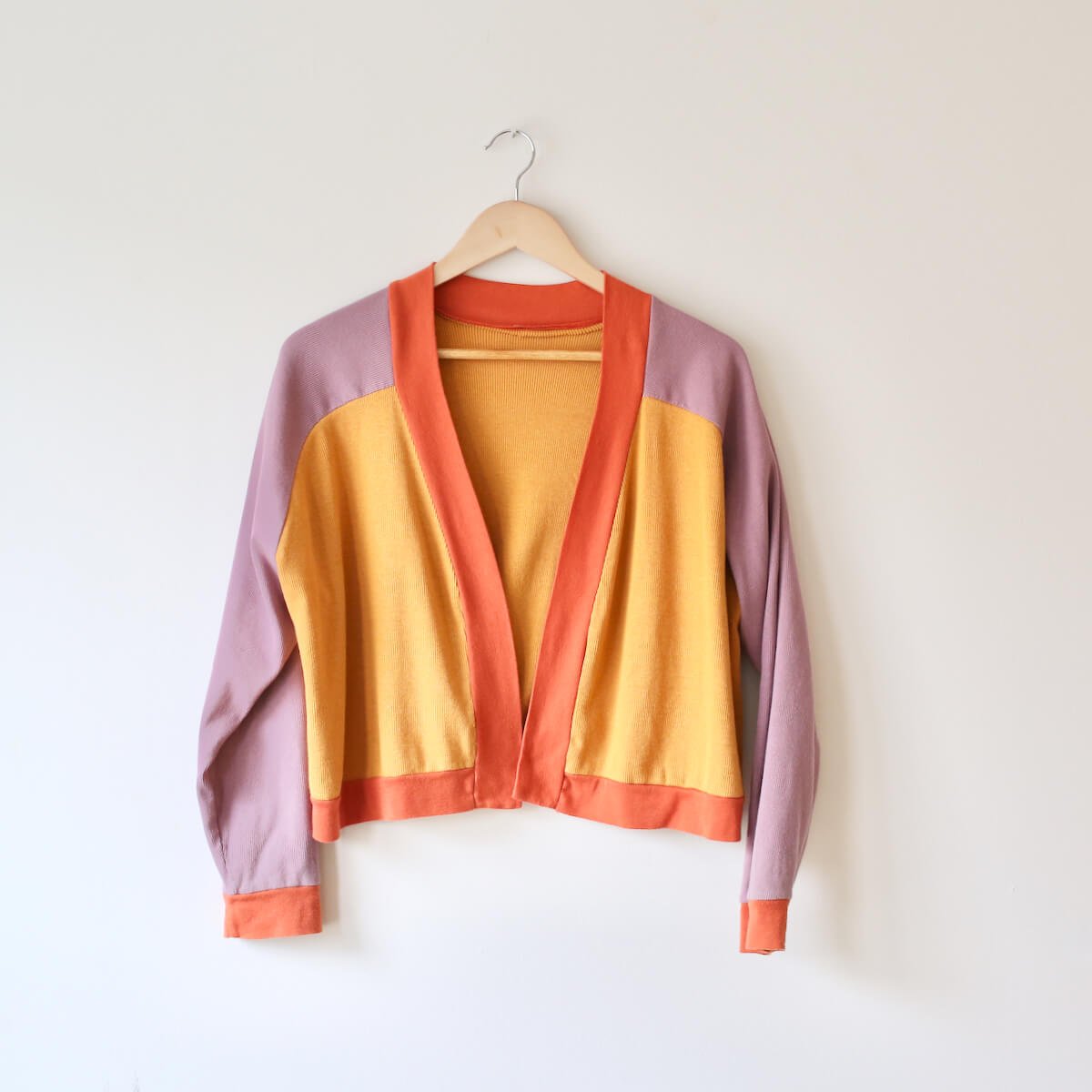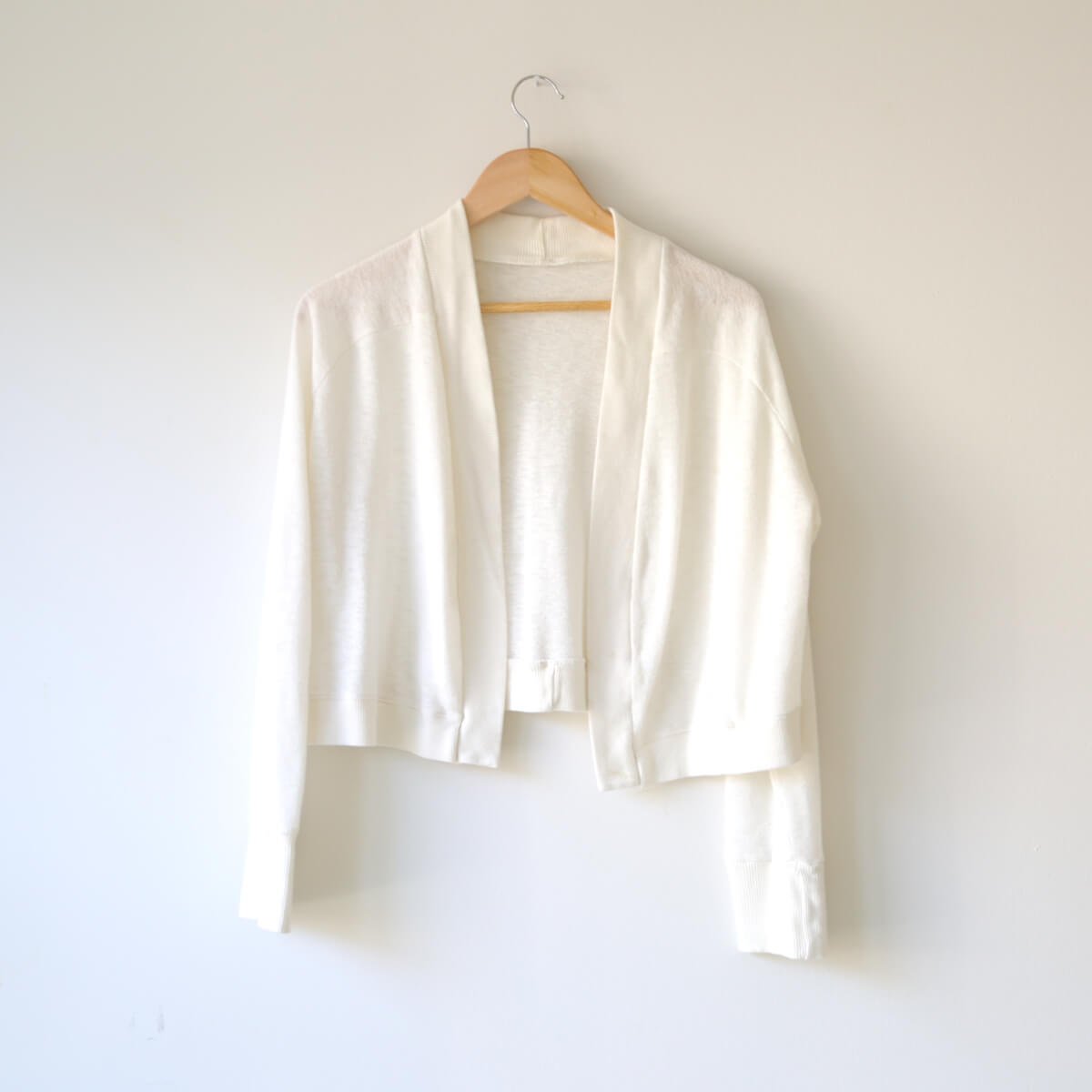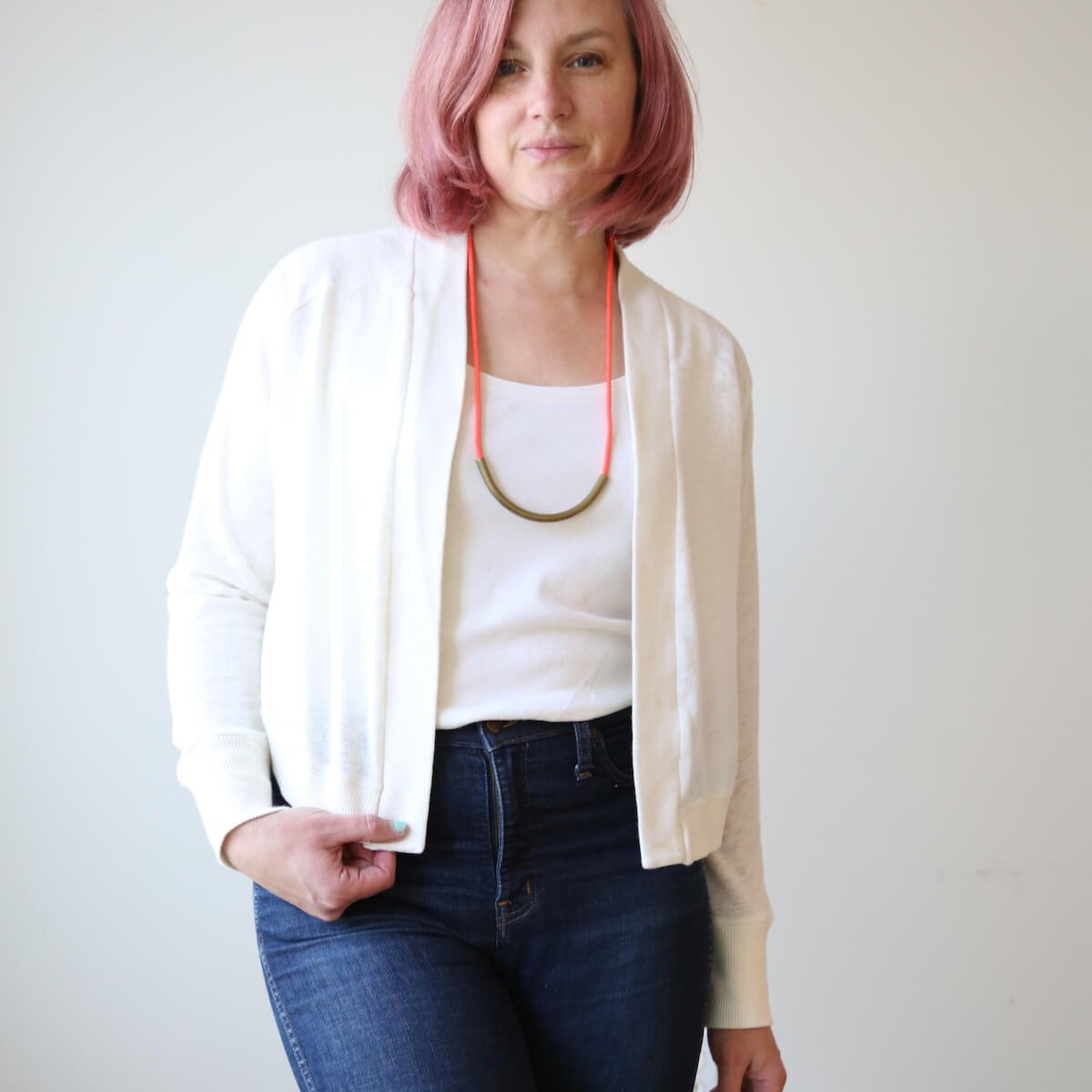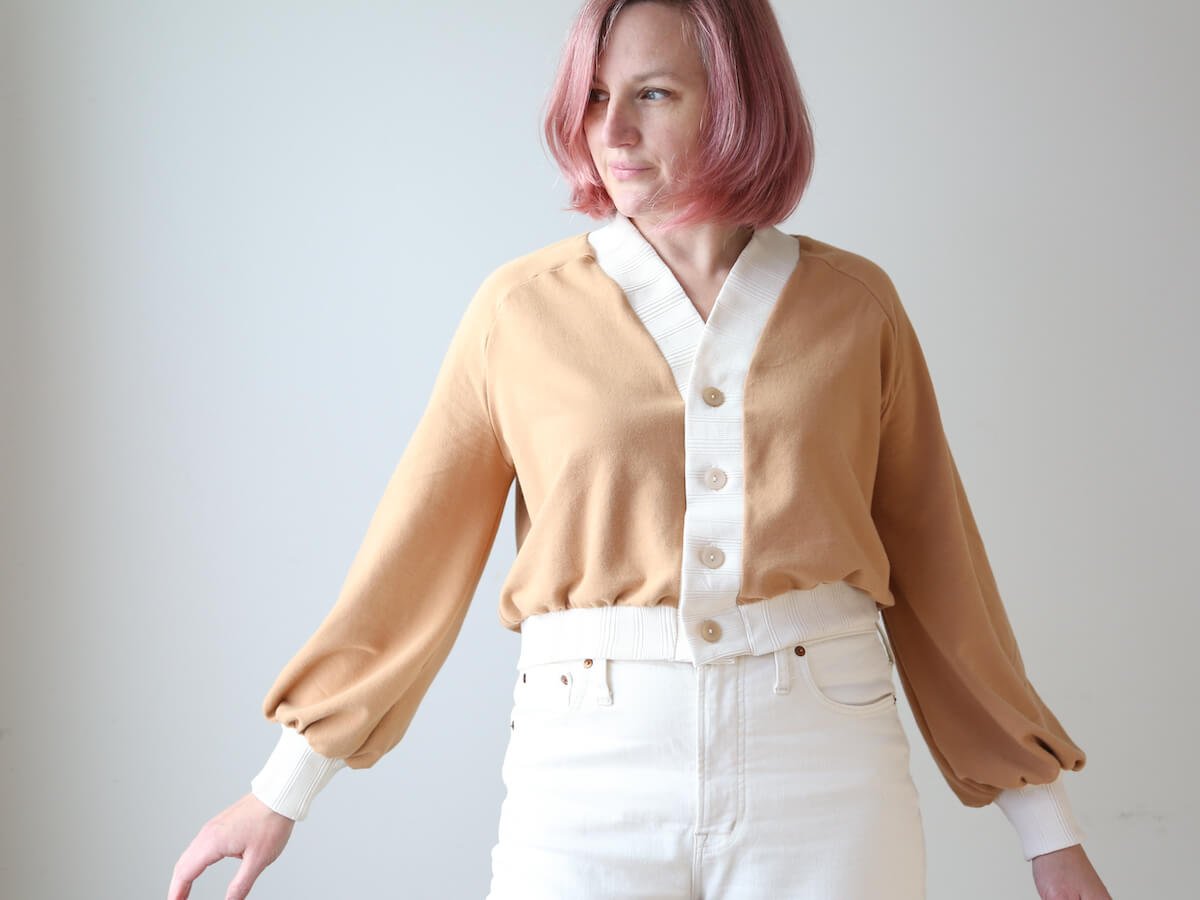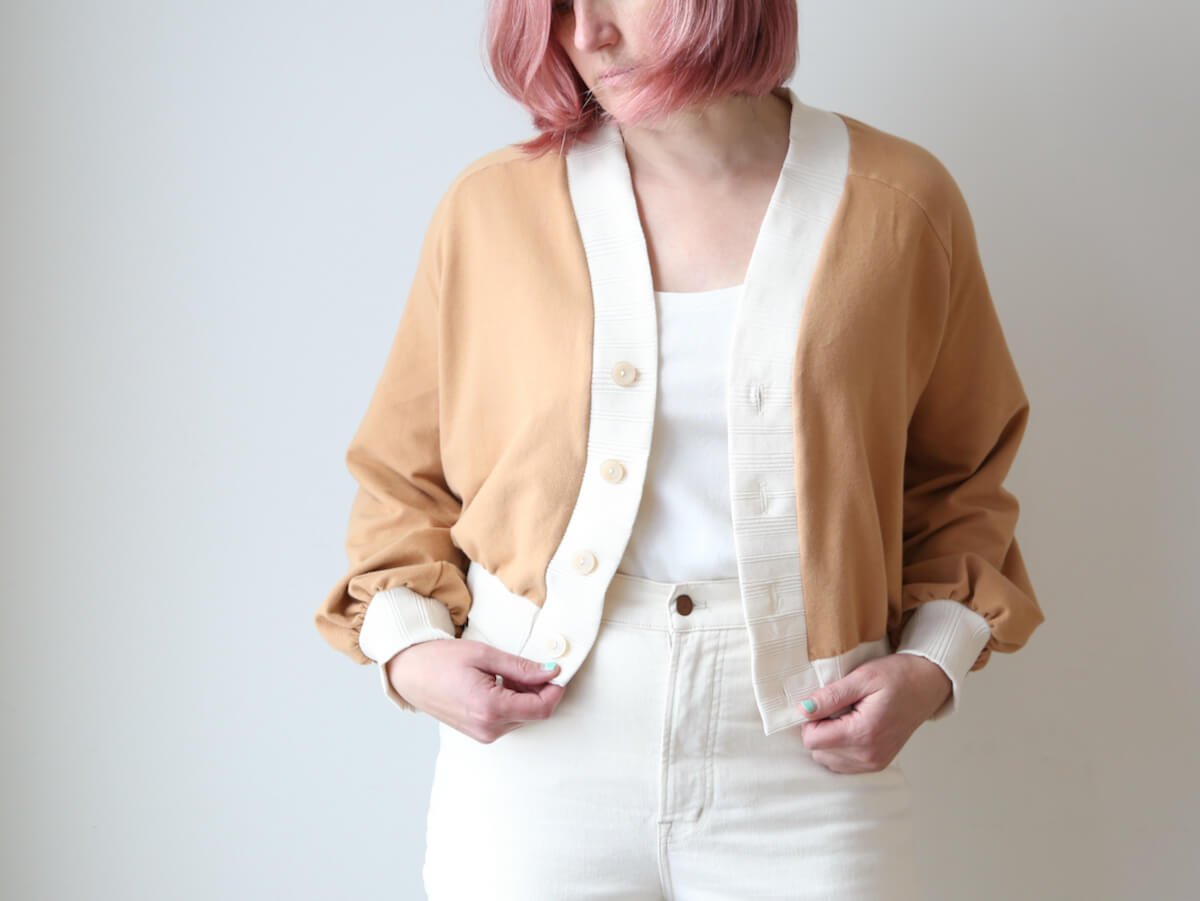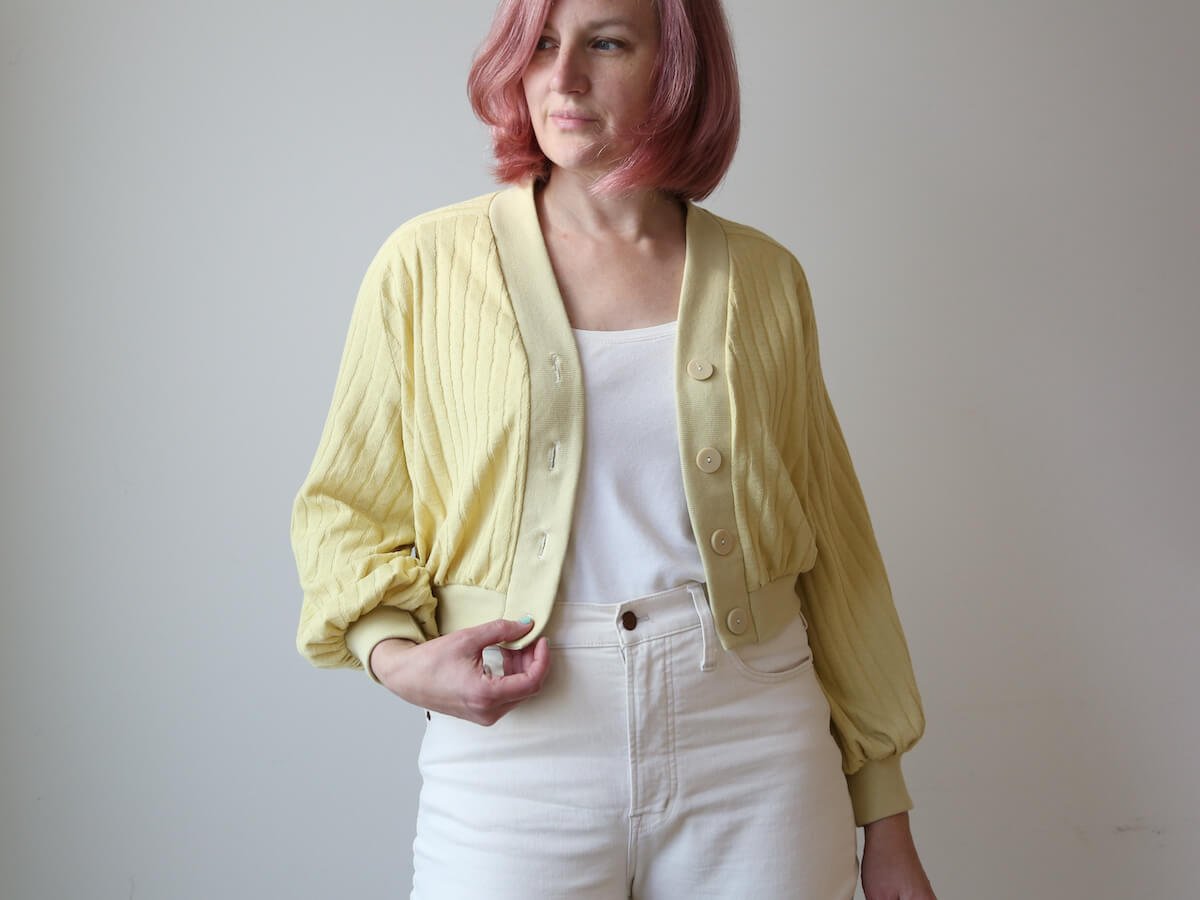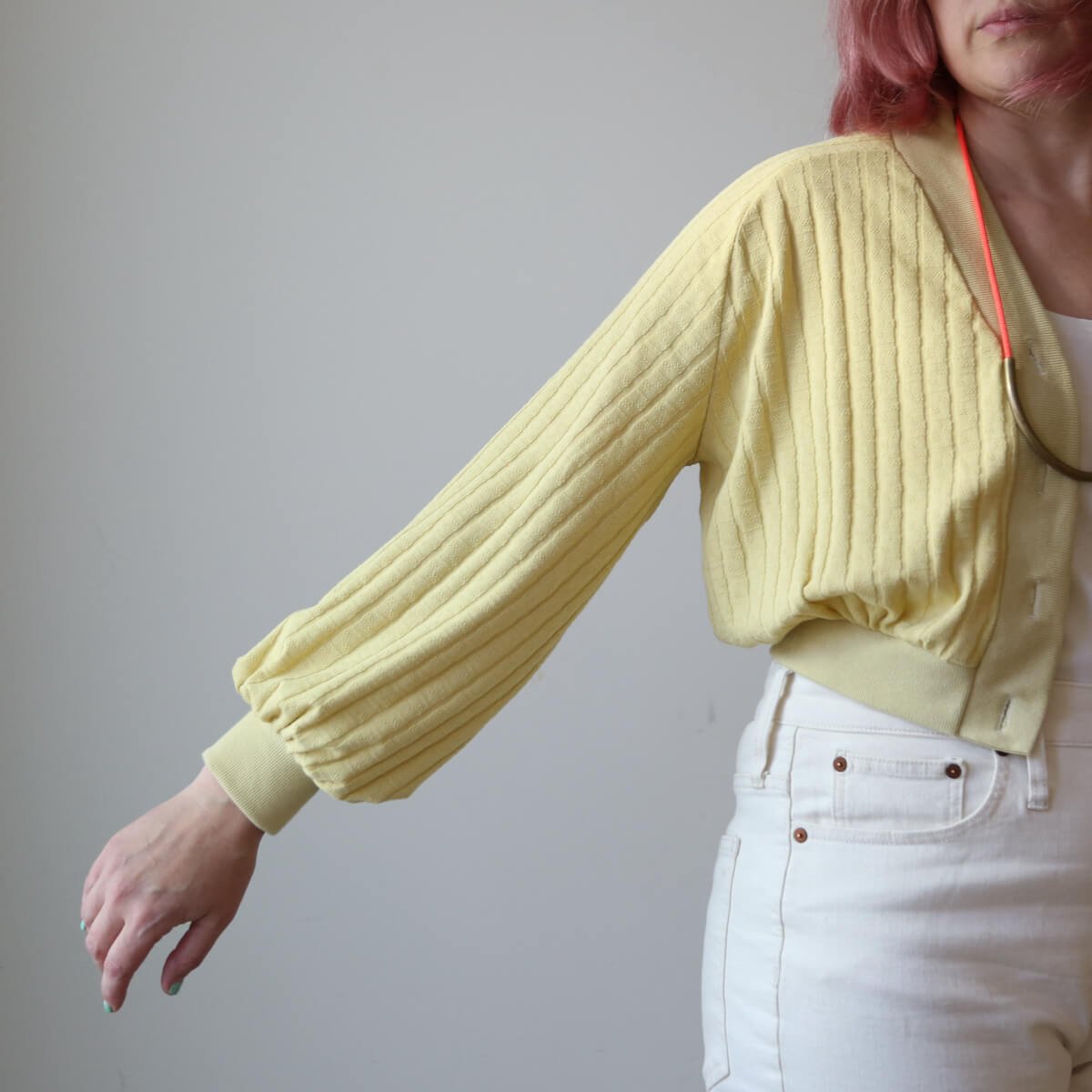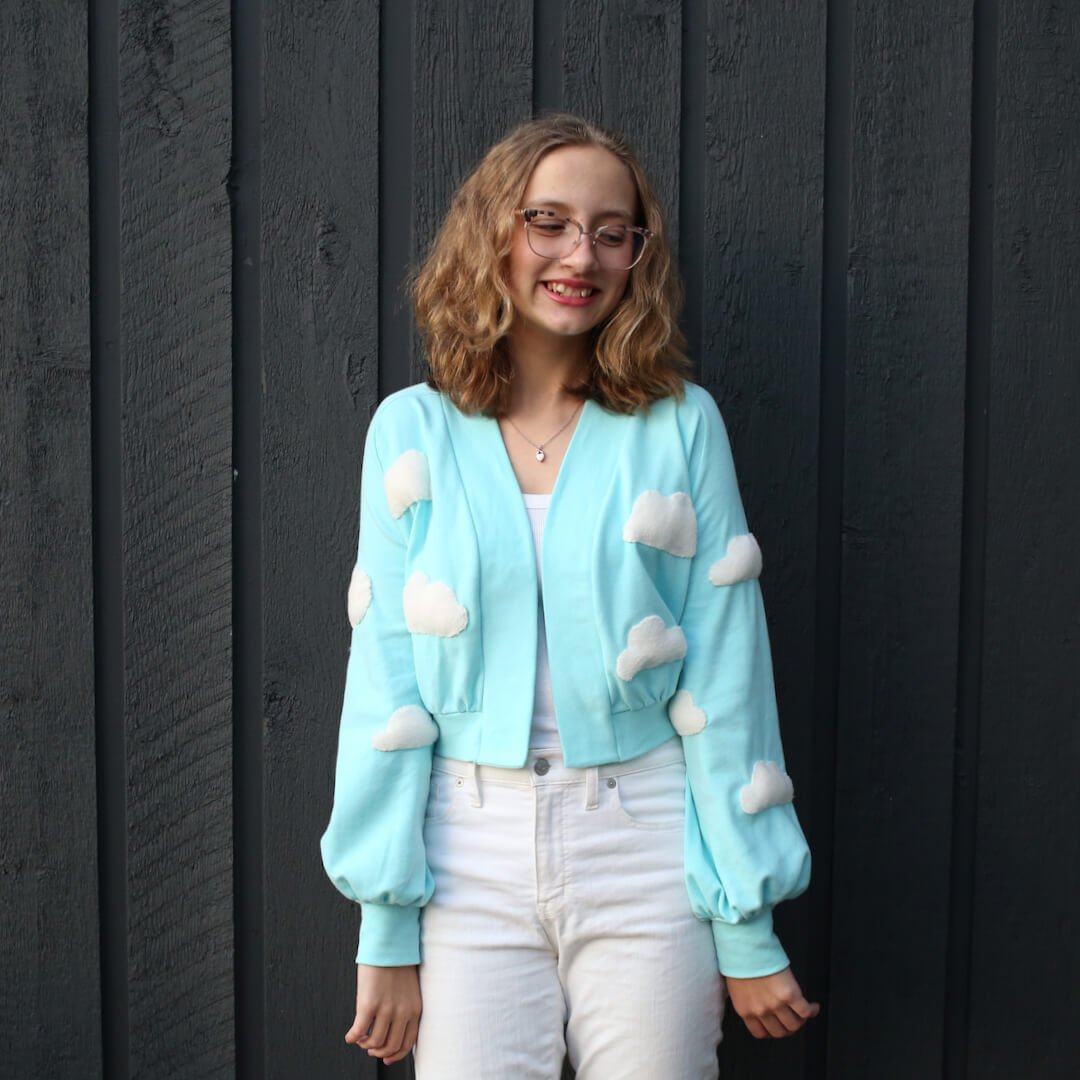Get Ready for Citrine!
Have I mentioned my upcoming pattern, Citrine? Kidding, kidding. Don’t worry, my friends — it’s almost here - plan is to launch it next week!
UPDATE: Citrine is here and is now available in my shop!
Today I want to provide you with some notes on this pattern so you can get ready for Citrine by gathering your materials and finding some great fabric fo this fun and cozy project.
ABOUT THE CITRINE PATTERN
Citrine is a cardigan designed for knit fabrics. The pattern features unique raglan seams and is finished with wide double-fold bindings for the neck, waist and cuffs. Choose from two sleeve styles: fitted or balloon, two waist options: straight or gathered, and optional buttons to help you customize your cardigan. Two front bodice pattern pieces - with and without a dart - are provided to provide fit flexibility for different busts.
This comfortable design is quick and easy to sew and is the perfect layering piece to add to your wardrobe. Citrine looks fantastic paired with high-waisted styles like the Cleo skirt or Rose pants or worn over an Emerald or Trillium Dress.
View A
View B
Recommended fabrics & YARDAGE
Citrine can be made with the same fabric for both the main garment and bindings, or with a contrasting fabric for the bindings. The binding fabric must have at least 70% stretch.*
For main garment: I recommend light to medium weight knit fabrics such as stretch terry, sweater knit, jersey, or rib knit with at least 30% stretch.
One note here: thicker fabrics such as terry, or fabrics that don’t have much drape may be better suited to view B, since the view A waist can be fairly boxy if you use a fabric with less drape. However, if you like that look - go for it! It’s really up to you!
For the bindings (neckband, waistband, cuffs): Rib knit or sweatshirt ribbing with at least 70% stretch, if I’m not using the main fabric for my bindings.
* So if your main fabric has at least 70% stretch, you can use the same fabric for both or choose a contrasting fabric for the bindings. If your main fabric has less than 70% stretch, choose a second fabric with at least 70% stretch for the bindings.
OTHER materials
Buttons: If you want to add buttons (to either view), you’ll also need four buttons - 5/8” - ⅞” [15-22 mm]
Interfacing: If you’re adding buttons, I suggest 1⁄4 yd medium weight fusible interfacing to reinforce the button placket
If your ribbing fabric is especially stretchy or lightweight, consider also adding tricot (knit) interfacing to the neckband and waistband pieces to make them easier to attach. You’ll need the same amount (or slightly less) of yardage as your bindings, if you choose to do that.
(See also: this post about my favorite garment interfacing)
BONUS - stabilizer: One other thing - I’ll do a post about this soon, but after a bit of experimentation I found that it’s easier to create knit buttonholes if you add a small piece of fusible stabilizer under the button area. If you can find a small strip of water-soluble stabilizer, this is perfect - it dissolves in water after you make the buttonholes and completely disappears!
Thread: Don’t forget coordinating polyester thread.
Sizing
Citrine is designed to fit chest sizes 32” to 66” [81-168 cm], with the measurements in the chart above representing the max recommended chest measurement for that size. We suggest that if you are between two sizes, you use the next size up.
Hip and waist measurements are given for reference, but are less important in choosing size (for instance, if you are between measurements, go up or down). Citrine also has quite a bit of ease (extra room) built in, so you may prefer to size down for a less boxy or oversized fit, or not need to grade out to a larger hip size, for instance.
In addition to size options, you also have the option to choose a darted front or a dartless front; if you have a fuller bust or typically use the C/D bodice options in my other patterns, you may want to add the dart as it provides additional shaping to the design. However, some of our testers who usually use the C/D bodice mentioned that they didn’t think the dart was necessary for them. One handy thing is that the dartless front bodice can be recut from the same piece of fabric as the darted front, so you can always remove the dart stitches and recut it if you decide you don’t need it.
I’ve made a page for Citrine here on my website where you can find all of the charts and information in this post, plus all of the blog posts, tutorials and other links
I hope you are as excited as I am for this pattern! Stay tuned for a launch post, soon!!
